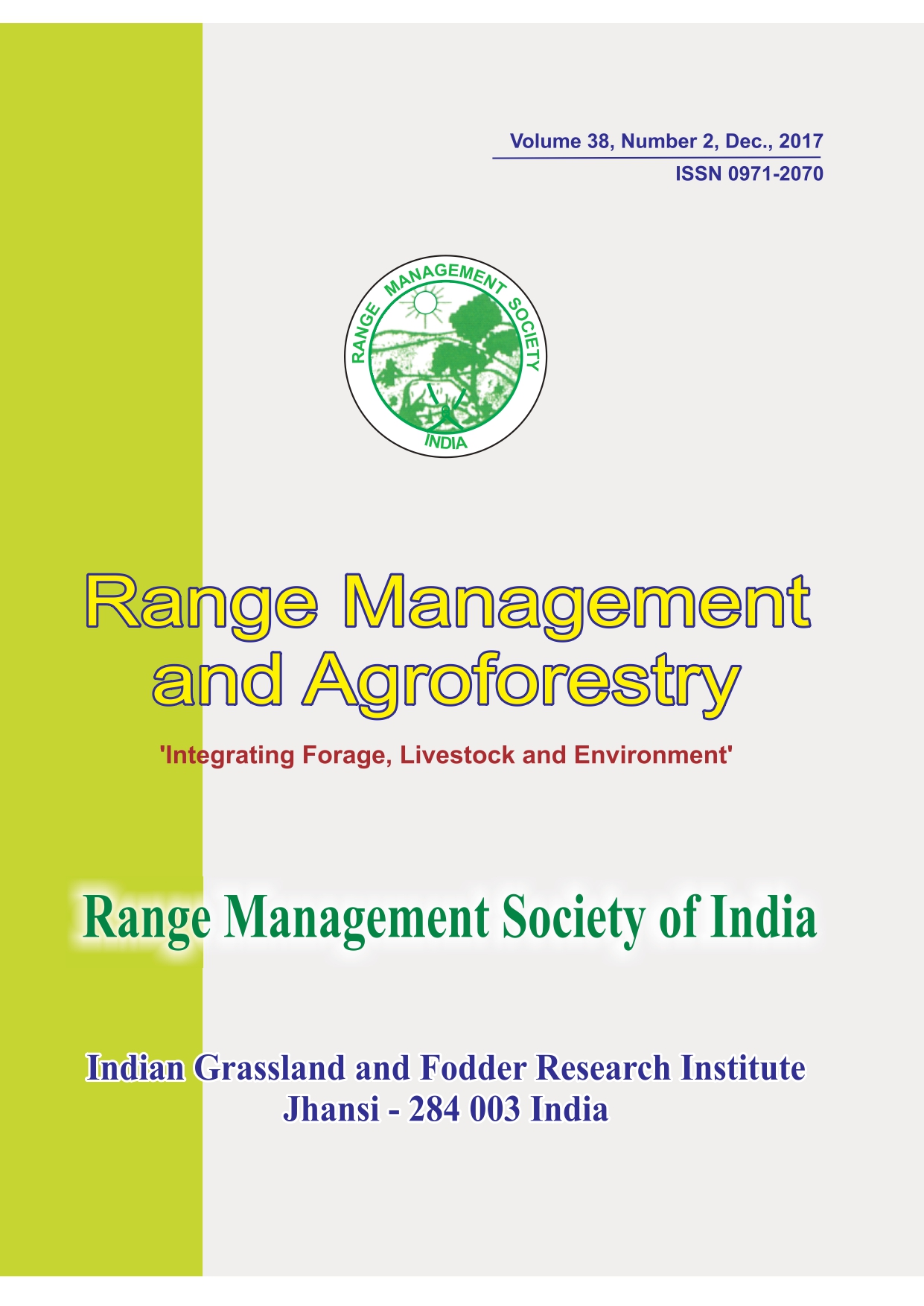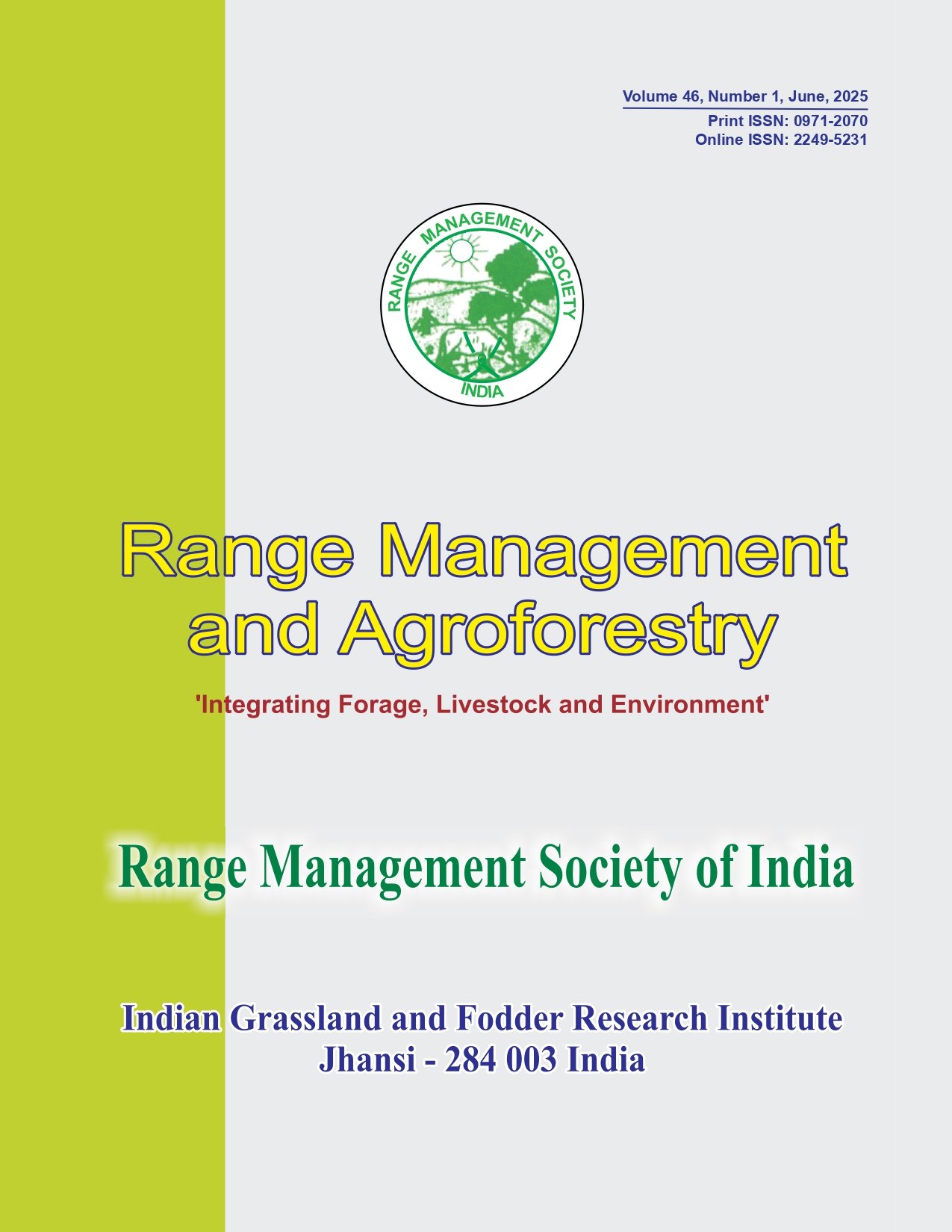Assessment of morphological diversity among the dual purpose sorghum landraces collected from tribal districts of northern Maharashtra
Keywords:
Climate resilient, Diversity, Fodder purpose, Grain traits, Races, Tribal areasAbstract
Sorghum (Sorghum bicolor (L.) Moench) is one of the most important climate resilient crops in the world. A total of 36 sorghum landraces were collected under national exploration programme from rainfed areas of Dhule, Nandurbar and adjoining areas of northern Maharashtra during 2015-16. These accessions were assessed for morphological diversity based on five quantitative and twelve qualitative traits. High variability was observed for most of the characters. Thirty-six accessions were also categorized into six different basic as well as hybrid races of sorghum on the basis of five fundamental spikelet types. High 100 seed weight was recorded in IC 618609 (3.12g) followed by IC 618658 (2.92 g). Total ear head weight varied from 9.23 (IC 618606) to 556.5g (IC 618648) with mean weight of 88.08g. Significant correlation (0.763, P<0.01) was observed among ear head length and ear head weight followed by ear head width and 100 seed weight (0.482, P< 0.05). Diversity analysis using Euclidean distances and Principal Component Analysis (PCA) classified the accessions into three major clusters. In PCA, first two components explained more than 99% of variation in the population. Shannon Diversity Index (SDI) indicated high variability for glume colour (2.05), ear head shape (1.56), grain colour (1.54), glume covering (1.27), ear head compactness and colour of vitreous albumen (1.25). The unique accessions identified in this study will provide excellent opportunities to improve sorghum for ear head weight, ear head length and various grain characteristics. This will further boost up sorghum utilization in developing more climate resilient cultivars.




